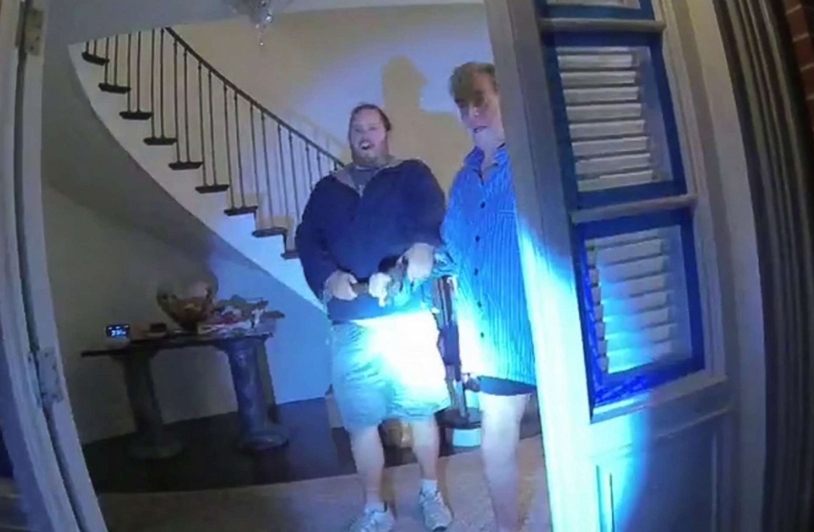Is This the Way Things Are Now?
Three very separate videos of rage and personal violence emerged last week, but rather than engendering shame, their very presence instead seem to suggest resignation that this is the way things are – with more violence to come.
Rather than prompting healing and change, disgusted reactions to the videos conflict with the constant campaigns to win at any means – even if it means people die.
Shouldn’t these videos force us to step back and look at ourselves? Don’t we need to look anew at concepts of justice and what contributes to de-escalation of violence?
The brutality reflected in the unrestrained, fatal beating of Tyre Nichols in Memphis over a reported traffic violation by five members of an elite anti-crime police unit was at once shocking – again – but also prompted vigilance in cities across the nation for violent protests that never developed.
Instead, cool heads prompted processing of evidence and much more transparent legal views of the police actions, leading to the filing of murder and assault charges involving the police officers involved as well as the breakup of the specific police unit. Still, there were plenty of voices to support continued combat-trained police to stop perception of rising crime.
The 90-seconds of the hammer hitting the head of Paul Pelosi, the 82-year-old husband of the former Speaker Nancy Pelosi, in their San Francisco home was cringe-worthy. It should have been enough to dispel any of the conspiracy theories spun in the attack’s wake based on political opposition to Pelosi and Democrats, but there were new conspiracies spinning almost immediately.
In Israel, video of the aftermath of a gunman with a handgun killing seven Israelis at worship in a synagogue should have brought new scrutiny to renewed killings of Palestinians at the hands of the Israeli Army. But the strongest voices even within the newly right-wing Israeli government coalition were for changes in law to arm civilians with guns and anti-Arab restrictions that could lead to civil war.
“No matter what happens, no matter what footage we have, what documents we have, people tend to spin narratives to support their side of the story,” said Nina Jankowicz, a disinformation expert told The New York Times. “We just see this distrust of what you can see with your own eyes over and over and over again.”
She was talking about the Pelosi incident, but it could have been the January 6, 2021, Capitol insurrection riot, any of the 43 mass shooting sites we’ve recorded in a single month of gun violence, or videos of people being pushed to a subway edge in the anger of a single homeless, mentally ill guy in New York City.
In Memphis
The Tyre Nichols beating death was horrific, of course, but as a line of civil rights lawyers, journalists, family members and citizens could note, hardly unique about the long line of cases that show consistently worse treatment of Black suspects by police and justice officials.
That discussion about the dissonance between the outlook and attitude among police trained for confrontation and the needs of stepping in to protect citizens is still beyond us.
There is no chance that legislation like those introduced in Congress after the George Floyd murder by police will survive. In our deeply divided partisan politics, the issues dealing with racial justice, equality in policing and the law are beyond the possibility of finding compromises over making it easier to prosecute bad police and to require that policing reflect more community values.
Indeed, other than the fact that the five Memphis police officers themselves are Black, what has stood out in the Tyre Nichols case has been the candor and controlled anger of Police Chief Cerelyn J. Davis, a Black woman who has headed the department for two years.
In interviews with journalists, Davis was remarkably frank and judgmental about her own now-fired officers, questioning even the reported reckless driving finding that launched this incident. Eschewing the normal advice for police and district attorneys to be protective of pre-trial talk, Davis came across as a credible and honorable leader.
“This is not just a professional failing,” Davis said. “This is a failing of basic humanity toward another individual.”
What Are We Doing?
Taken together, the violence of the videos renews the questions: What are we doing, or can we be doing to protect our citizens? What are our responsibilities to one another?
The videos are too much for many to even watch, raising reactions of disgust for thuggery in police uniform. The distribution of police body cameras has not altered basic policing behavior, it simply records it.
Our public officials should not be dealing with violent attacks, our places of worship should be off-limits even to those insisting on personal attacks. Our society should be valuing attempts to turn the potentially bad moment into something less than awful.
Our discussion about a right to life ought to be centered on the living rather than an abstract argument about the moment of conception.
CLICK HERE TO READ MORE FROM TERRY SCHWADRON




